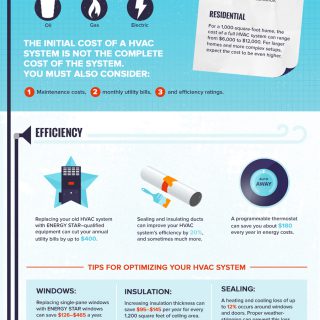The Future Of Home Home Heating - Just How Heatpump Innovation Is Developing
The Future Of Home Home Heating - Just How Heatpump Innovation Is Developing
Blog Article
Short Article By-Dugan Oliver
Heatpump will be a critical technology for decarbonising heating. In a situation regular with federal governments' announced power and climate dedications, their international capability doubles by 2030, while their share in heating rises to one-quarter.
They function best in well-insulated homes and depend on power, which can be provided from a renewable power grid. Technical developments are making them much more efficient, smarter and less expensive.
Gas Cells
Heatpump use a compressor, cooling agent, coils and followers to move the air and warm in homes and home appliances. They can be powered by solar power or electrical power from the grid. They have actually been obtaining popularity as a result of their affordable, quiet operation and the capacity to create electrical energy throughout peak power need.
Some firms, like IdaTech and BG MicroGen, are working on gas cells for home heating. These microgenerators can change a gas boiler and generate some of a home's electrical needs with a connection to the electricity grid for the remainder.
But there are factors to be cynical of using hydrogen for home heating, Rosenow says. It would be pricey and ineffective contrasted to other modern technologies, and it would certainly add to carbon exhausts.
Smart and Connected Technologies
Smart home modern technology enables homeowners to attach and manage their gadgets from another location with the use of smartphone apps. For ac installation canterbury , clever thermostats can learn your heating preferences and automatically get used to enhance power consumption. Smart lighting systems can be regulated with voice commands and automatically switch off lights when you leave the room, reducing energy waste. And wise plugs can monitor and handle your electrical use, permitting you to identify and limit energy-hungry appliances.
The tech-savvy home shown in Carina's interview is an excellent image of just how occupants reconfigure area home heating techniques in the light of brand-new clever home technologies. They rely upon the devices' automated features to execute everyday modifications and regard them as a practical ways of performing their heating techniques. Because of this, they see no factor to adapt their techniques better in order to enable versatility in their home power need, and interventions focusing on doing so might face resistance from these families.
Power
Considering that heating up homes represent 13% of US discharges, a button to cleaner choices can make a big difference. Yet the innovation deals with challenges: It's pricey and calls for substantial home improvements. And it's not constantly suitable with renewable energy sources, such as solar and wind.
Until just recently, electrical heat pumps were also costly to take on gas models in a lot of markets. However relevant resource site -new innovations in design and materials are making them more cost effective. And better cold climate performance is allowing them to operate well also in subzero temperatures.
The following action in decarbonising home heating may be making use of warm networks, which attract warmth from a central resource, such as a neighboring river or sea inlet, and disperse it to a network of homes or structures. That would certainly lower carbon emissions and permit households to capitalize on renewable energy, such as green electrical energy from a grid provided by renewables. This choice would be much less pricey than switching to hydrogen, a fossil fuel that calls for new framework and would only reduce CO2 emissions by 5 percent if coupled with boosted home insulation.
Renewable Energy
As electrical energy prices go down, we're starting to see the very same pattern in home heating that has actually driven electrical automobiles right into the mainstream-- yet at an also faster rate. The strong environment case for electrifying homes has been pressed better by new research study.
Renewables represent a significant share of contemporary warmth consumption, yet have actually been provided limited plan interest internationally contrasted to various other end-use sectors-- and also less interest than electrical power has. Partly, this reflects a mix of consumer inertia, divided motivations and, in lots of nations, subsidies for nonrenewable fuel sources.
heat pump special might make the shift simpler. For example, heat pumps can be made much more power efficient by changing old R-22 cooling agents with brand-new ones that do not have the high GWPs of their predecessors. Some experts additionally visualize area systems that attract warmth from a nearby river or sea inlet, like a Norwegian fjord. The cozy water can then be used for heating & cooling in an area.